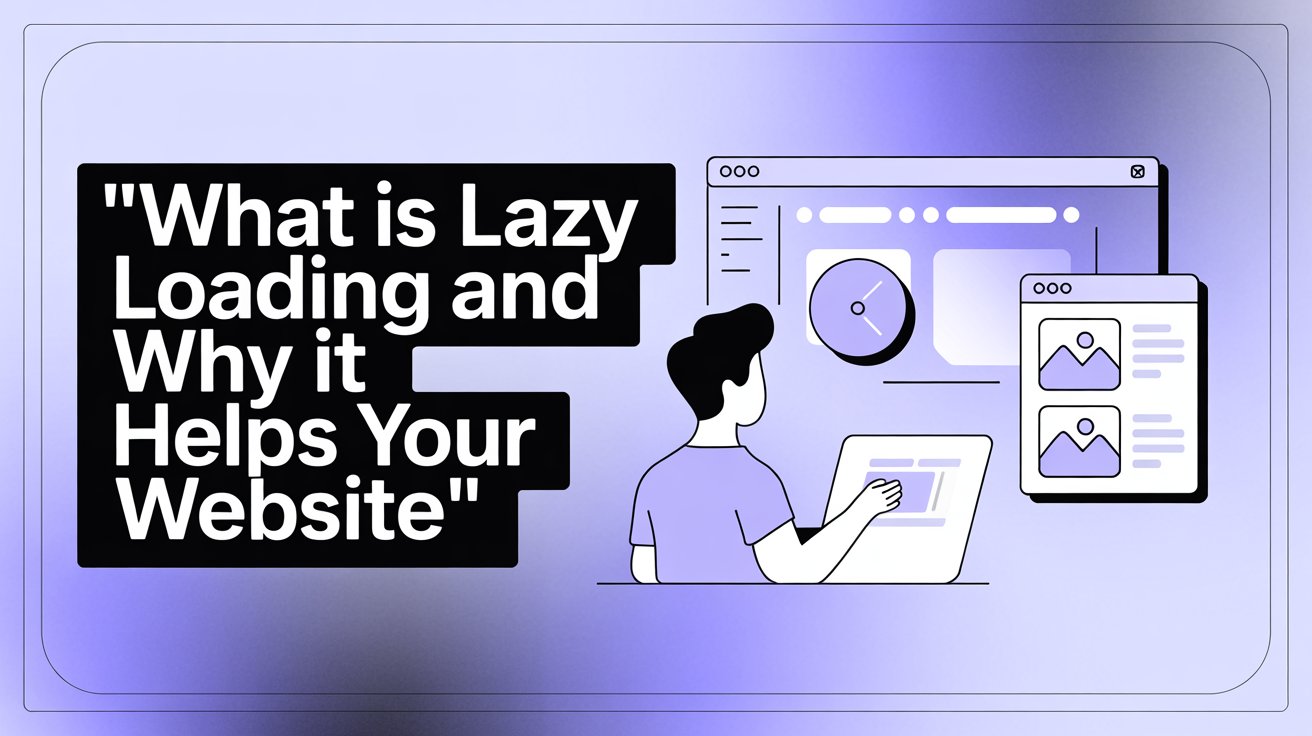What Is Lazy Loading
Lazy loading is a way to make your website load faster. Instead of loading everything on the page at once, lazy loading only loads parts of the page when the user needs them. For example, an image at the bottom of the page won’t load until the user scrolls down to it. This helps your page load quicker when someone first visits it.
You can learn more from the Search Engine Land lazy loading guide.
Why Lazy Loading Is Important
When a page loads slowly, visitors leave quickly. Also, search engines like Google may rank slow pages lower. Lazy loading helps by speeding up your site, which gives users a better experience and may help with your SEO as well.
It also saves bandwidth. If someone doesn’t scroll all the way down, the images or videos at the bottom are never loaded. That means your website only uses what it needs.
How Lazy Loading Works
Lazy loading delays loading certain parts of a webpage. Most often, it’s used for images, videos, or third-party tools like embedded maps or social media widgets.
It works with the help of simple HTML or JavaScript. For example, in HTML you can use the loading=”lazy” attribute on images, which tells the browser to wait until the image is about to come into view.
Which Things Can Be Lazy Loaded
Here are common elements that websites use lazy loading for
Images
Videos
Iframes (like YouTube embeds or Google Maps)
JavaScript-heavy sections (chat widgets, carousels, etc.)
Ads and trackers that are not needed immediately
What Are the Benefits
Using lazy loading can help with
Faster load time for users
Lower bounce rates
Better Core Web Vitals (important for Google ranking)
Less data used on mobile devices
Improved user experience on slower connections
Are There Any Downsides?
Sometimes, lazy loading can hide content from search engines if it’s not set up correctly. For example, if images or text are loaded only through JavaScript and not visible in the HTML, search engines might miss them.
To avoid this, make sure lazy-loaded content is still discoverable by Google. Google has shared best practices for lazy loading so you can follow them.
Should You Use Lazy Loading
Yes, especially if your site has a lot of images or media content. It’s simple to set up and gives a big boost in speed. Even basic changes like adding loading=”lazy” to images can help right away.
Just be careful with how you implement it. Test your pages to make sure important content is visible to both users and search engines.
My Final Thoughts
Lazy loading is one of the easiest ways to improve your website’s speed and performance. It makes your site faster, keeps users happy, and can even help your SEO if done correctly.
If you run a blog, eCommerce site, or any page with lots of images or videos, lazy loading is worth using. Just make sure search engines can still see your content.

